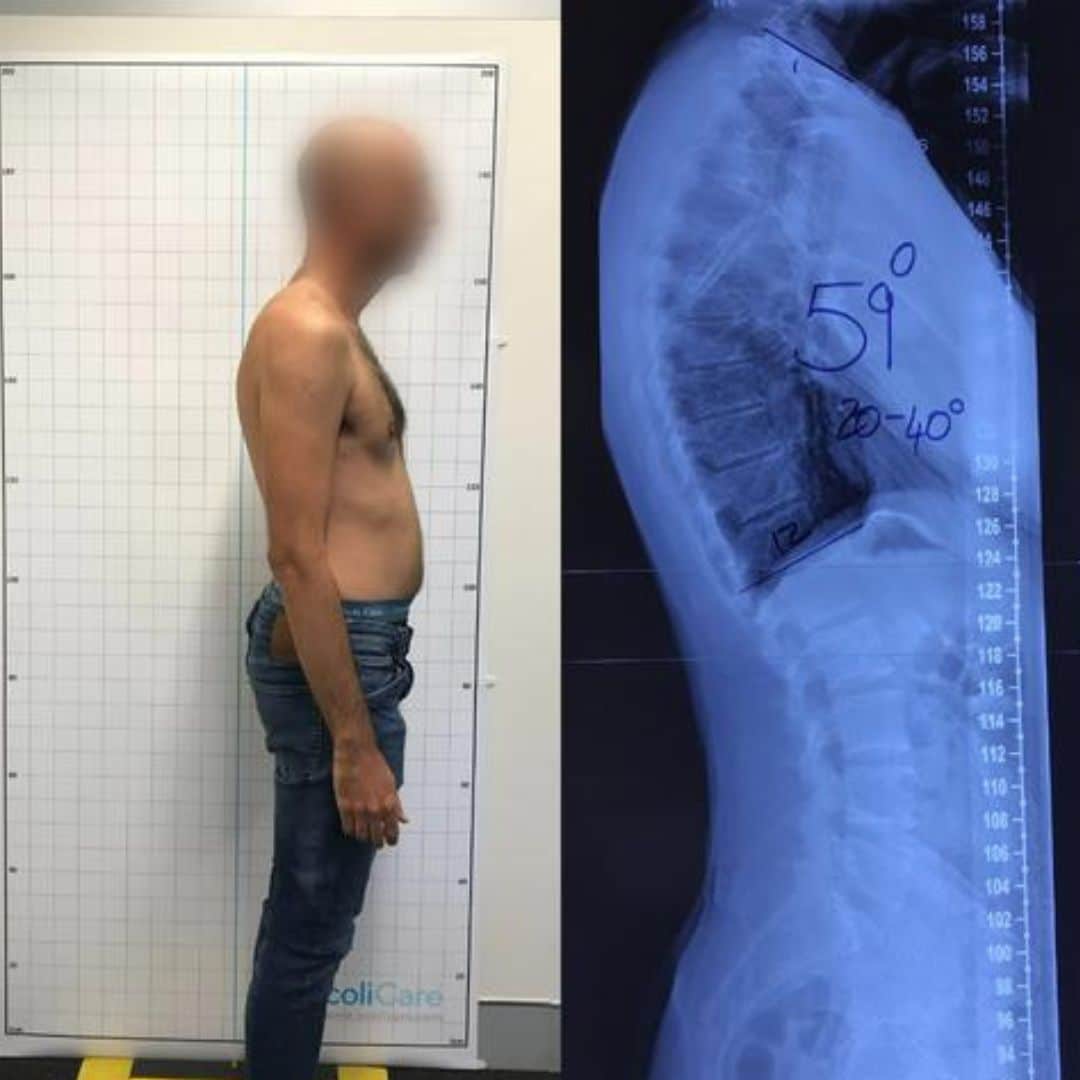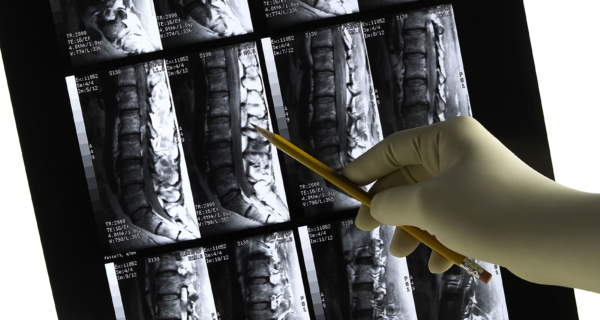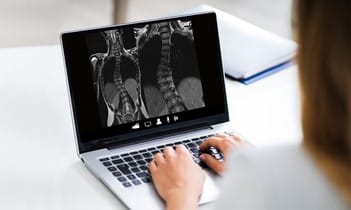Hyperkyphosis is going to be a buzzword in the coming years, if it isn’t already. Today’s more sedentary lifestyle has seen a massive shift towards more time spent hunched over laptops and other devices, leaving many people wondering what the long-term impact might be. When you look at your posture from a side view, we all naturally have a more rounded upper back (kyphosis) and a more ‘inwards’ lower back (lordosis) (Fig. 1). This is normal and there can even be variations in what is ‘normal’. However, when is the line crossed over? When does a slumped posture actually become a concern? Is this ever a structural problem that can’t be reversed? Let’s look a little more closely.
What is Hyperkyphosis?
Hyperkyphosis occurs when there is an increase in the kyphosis, usually in the thoracic spine region (upper back). This can be a structural or postural problem. When you slouch without any structural deformity, you are creating an environment where the muscles, ligaments, tendons, spine and discs are all placed in a different, and often stressful position, particularly if you hold that position for a long time. This can alter the position of the other parts of the spine too, such as the neck. Pain in the neck or other regions of the body can develop from something as simple as this postural position if sustained for a long time, particularly if it’s a frequent occurrence.
In some cases, adolescents will have a hyperkyphotic spine that is structural. This means that there are structural changes in the spine that have created a more rounded upper back. This is not something that they can easily change without the right treatment approach. In some cases the adolescent will require a specific exercise program, such as ScoliBalance, whereby a health professional specifically trained in hyperkyphosis and scoliosis can work with them to create an individualised treatment plan. When the curve gets beyond 50 degrees a brace may be required. Larger curves may require surgery so it’s important to get assessed as early as possible.
Adults may be living with hyperkyphosis as a result of poor posture or Scheurmann’s disease, although Scheurmann’s tends to be more typically diagnosed in adolescents. Hyperkyphosis can also develop later in life as a result of degenerative processes occurring in the spine that may start with a reduced lumbar lordosis and changes in the pelvic tilt. This leads to a more backwards lean in the pelvis and so the body will compensate by creating a forward slouch in the thoracic spine, therefore creating a hyperkyphosis. This is typically what has occurred when you see an older person slumped forward holding onto a walking frame (Fig. 2).
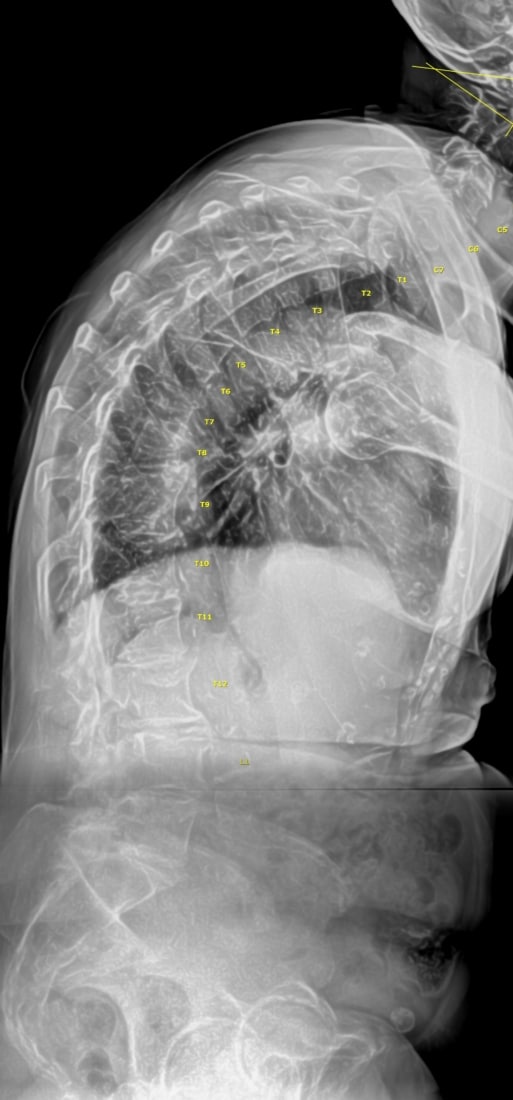
When is Hyperkyphosis Actually Scheurmann’s Disease?
Scheurmann’s Disease is diagnosed when there is hyperkyphosis in the spine, with wedging in three adjacent vertebrae and the evolution of Schmorl’s nodes (whereby the discs start to protrude (Fig. ). This is a structural condition that requires an assessment and management plan from a health professional specifically trained in this area. Scheurmann’s Disase often creates a more sharp appearance when the person bends forward and you look at the spine the side (Fig. 3)
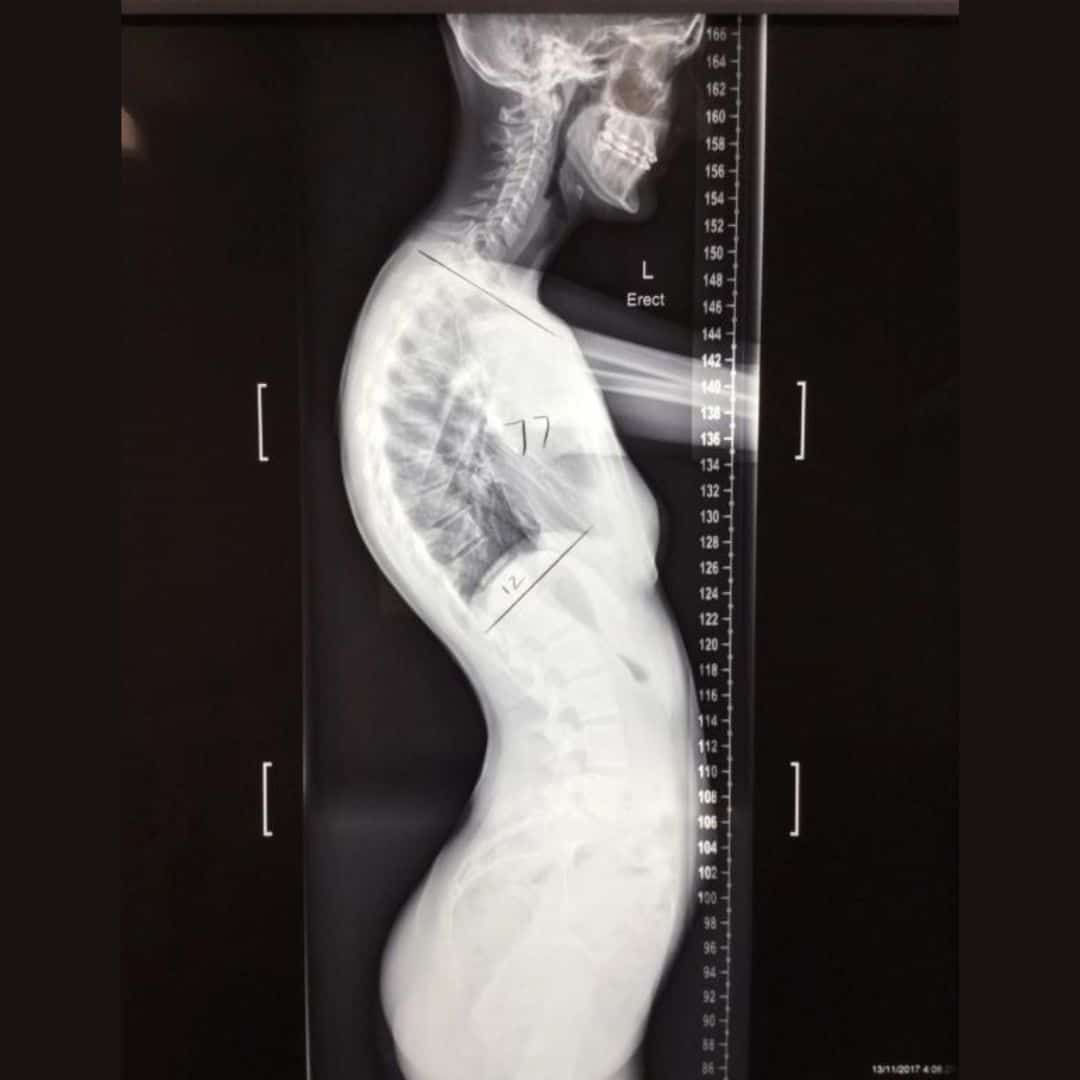
Fig 3. Scheurmann’s Disease

What about General Poor Posture?
If you are worried about the slouching that occurs day-to-day then there are things that can be done to make changes (Fig, 5). This may prevent structural changes occurring and can promote a more healthy spine and posture.

Tips for promoting a health posture may include:
- Ensure that there is a good set-up for work and homework. Check desk heights, feet position and support.
- Where possible have the screens elevated so that the eyes are at least looking forward and not downward.
- Take regular breaks.
- Be aware of slouching and incorporate regular stretch and movement breaks.
- Get advice from a health professional trained in this area to acquire specific advice for your spine (remember no two spines are the same).
- Maintain a healthy lifestyle so that the body has good overall strength, fitness and flexibility.
If you require individual advice for you or your child, click here.

